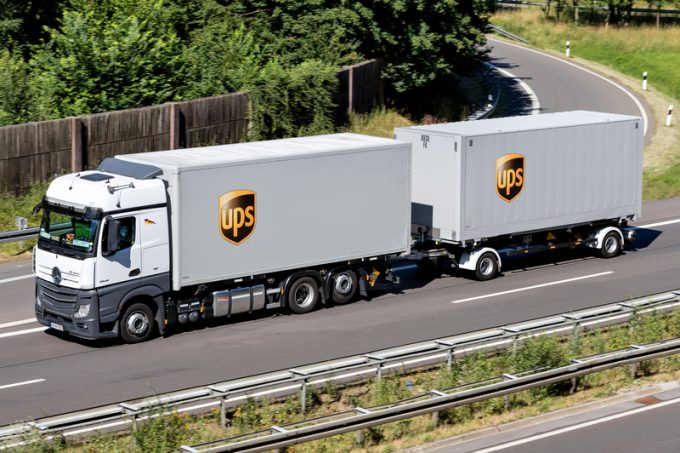UPS drama – a Premium back and forth on key bits and pieces
Network power
TFII: SOLID AS USUALMAERSK: WEAKENINGF: FALLING OFF A CLIFFAAPL: 'BOTTLENECK IN MAINLAND CHINA'AAPL: CHINA TRENDSDHL: GROWTH CAPEXR: ANOTHER SOLID DELIVERYMFT: HERE COMES THE FALLDSV: LOOK AT SCHENKER PERFORMANCEUPS: A WAVE OF DOWNGRADES DSV: BARGAIN BINKNX: EARNINGS OUTODFL: RISING AND FALLING AND THEN RISING
TFII: SOLID AS USUALMAERSK: WEAKENINGF: FALLING OFF A CLIFFAAPL: 'BOTTLENECK IN MAINLAND CHINA'AAPL: CHINA TRENDSDHL: GROWTH CAPEXR: ANOTHER SOLID DELIVERYMFT: HERE COMES THE FALLDSV: LOOK AT SCHENKER PERFORMANCEUPS: A WAVE OF DOWNGRADES DSV: BARGAIN BINKNX: EARNINGS OUTODFL: RISING AND FALLING AND THEN RISING

After weaker results in the second quarter, UPS has lowered its revenue projection for the year by a whopping $4bn, citing lost business and higher costs.
But management attributed much of the decline in results to the contract negotiations with the Teamsters union, which represents about 340,000 UPS employees, the majority of its workforce.
This cost the integrator about a million parcels a day as customers shifted traffic to other operators, worried a strike might hit their deliveries.
Q2 revenue fell to $22.06bn from $24.77bn in Q2 22, and adjusted operating profit dropped 18.4% to $2.8bn, missing Wall Street’s expectations.
The adjusted operating margin slipped from 14.4% last year to 13.2%, and daily package volume was down 9.4% from a year ago. The company’s international volume was down 6.6%, owing primarily to “continued softness on Asia tradelanes”.
In the domestic arena, which generates about two-thirds of the integrator’s revenue, average daily volume fell 9.9%, sending down domestic revenue 6.9% – partially offset by a 3.3% gain in revenue per piece.
According to CEO Carol Tomé, the drop in volume continued in July, which tallies with management’s assessment that much of the loss of traffic was due to the contract negotiations, which did not produce a tentative agreement until 25 July.
“We estimate the impact of volume diversion, combined with a slowdown in our sales pipeline pull-through, reduced volume in the second quarter by approximately 1.2m packages per day,” said CFO Brian Newman. And management is bent on recovering the lost traffic as fast as possible.
According to Ms Tomé, it is now “all hands on deck to win back the volume”. UPS intends to leverage its service levels, speed advantage over FedEx in certain markets and its low-cost SurePost product that uses the US Postal Service for final mile delivery.
In addition, it is expanding its Saturday delivery and weekend pick-up offerings and has set up a ‘control tower’ to facilitate taking on returning volume, as it does during peak season to accommodate surges.
Ms Tomé vowed to win back the traffic lost to other operators – as soon as the negotiations with the Teamsters produced “a handshake deal” – using the company’s new dynamic pricing capabilities. During the earnings call, she said she expected to win back all lost business by the end of the year.
Nevertheless, UPS has dialled down its revenue expectation for the year of $97bn, and now projects consolidated revenue of about $93bn. Operating margin is estimated to be 11.8%, down from 12.8% envisaged earlier.
Primarily this adjustment reflects the impact of the labour talks on volumes, and the costs associated with the new, yet-=to-be-ratified labour agreement. UPS has not provided a breakdown of these costs, but the union said the deal would add $30bn of new money over the duration of the contract.
Comment on this article
Francis Kirkwood
August 09, 2023 at 3:30 pmIt could be possible to pick up volumes by due to the demise of Big Yellow, parcel delivery can only grow Year by year anyway due to the demographics of an older population and the introduction of low emission regulations which are becoming more prevalent in the U.K. and other European countries.